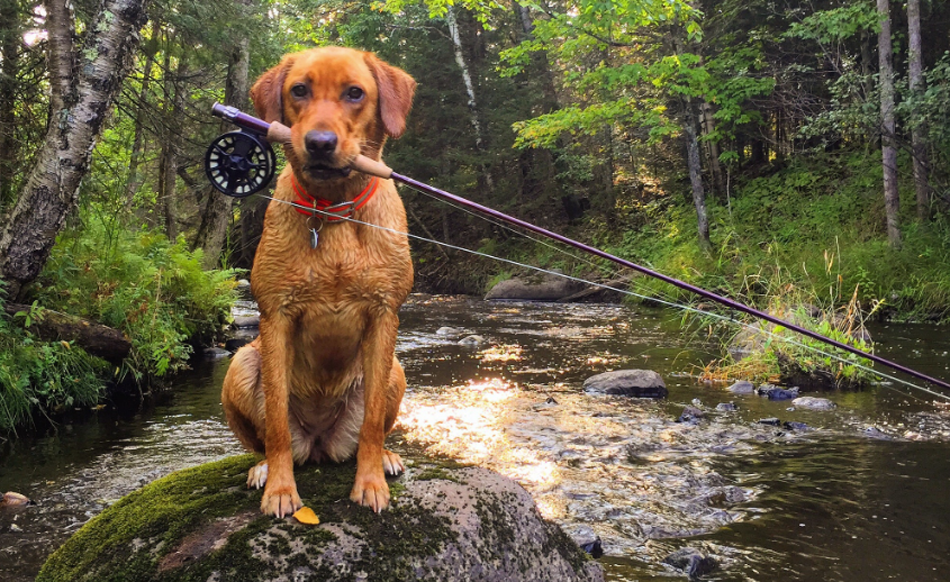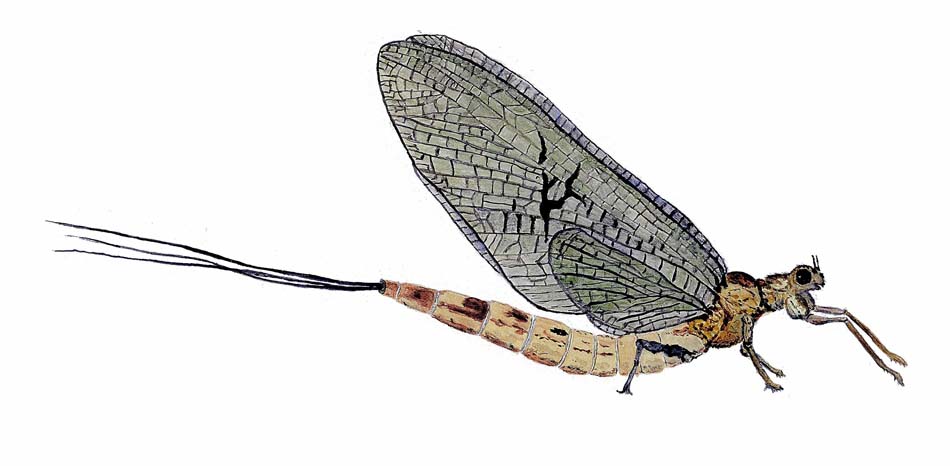
Eastern Green Drake Mayfly – Illustration by Thom Glace.
Fly fishing the four primary stages of aquatic insects
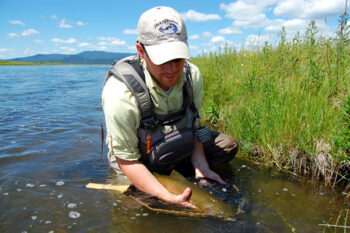
The Fly Fishing Basics was created by Clint Losee, an avid fly angler of 30+ years, software engineer, and Utah Nature Photographer, with the hopes of spreading some basic knowledge, tips, techniques, and information about fly fishing and learning how to fly fish.
By Skip Clement with Thom Glace, amended excerpts from Clint Losee, and video by Tom Rosenbauer / Orvis
Life as the insects know it
By breaking it down into these categories, you can see that fly fishing entomology is manageable. That breakdown of insects will cover approximately 99% of all the insects you’d need in your fly box. Granted, when you head to your local fly shop, you’ll see various variations of each category, but that’s all the more reason to fill those fly boxes.
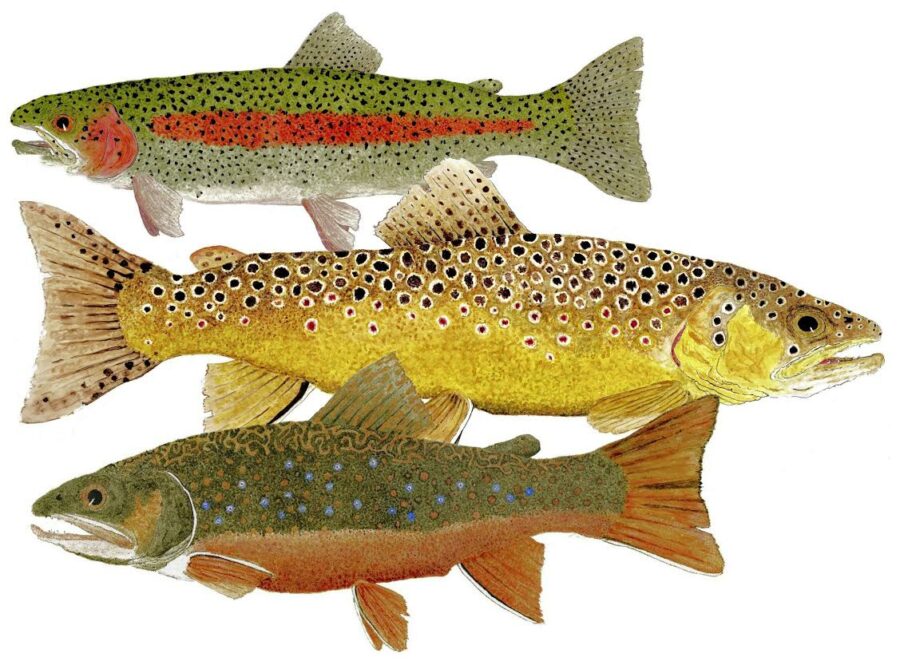
Reprinted with permission – Rainbow, Brown, and Brook. The rainbow is a westerner by birthright and includes the steelhead, and the brook is a native easterner, but it is not a trout. It’s a char with Maine and Eastern Canada, where the big boys get caught. This illustration by world-renowned watercolorist Thom Glace.
Entomology is the study of insects. There are more than a million different kinds of them. Fortunately, those that are aquatic and appeal to trouts are, as you expected, ranked genera, species, and families, or more specifically, having equitable biological classification order, which, when applied to fly fishing, really only involves learning the basic families or orders of insects, and not every single species out there.
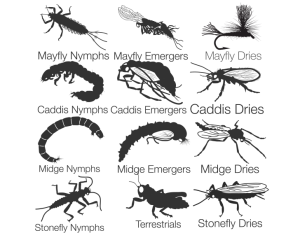 Understanding entomology to the extent a good trout angler applies favorably to their fly selection. An initial outcry regarding the latter is, what bug does a Woolly Bugger represent? There is no ‘Bugger’ insect. Instead, it is meant to imitate various insects, not a specific species.
Understanding entomology to the extent a good trout angler applies favorably to their fly selection. An initial outcry regarding the latter is, what bug does a Woolly Bugger represent? There is no ‘Bugger’ insect. Instead, it is meant to imitate various insects, not a specific species.
Almost all fly patterns we tie and fish with are imitations of orders of insects (categories). Science suggests to us that means instead of 1,000,000 needed to know, we can focus on just eight ‘categories’ of insects to identify on the water, according to Clint Losee.
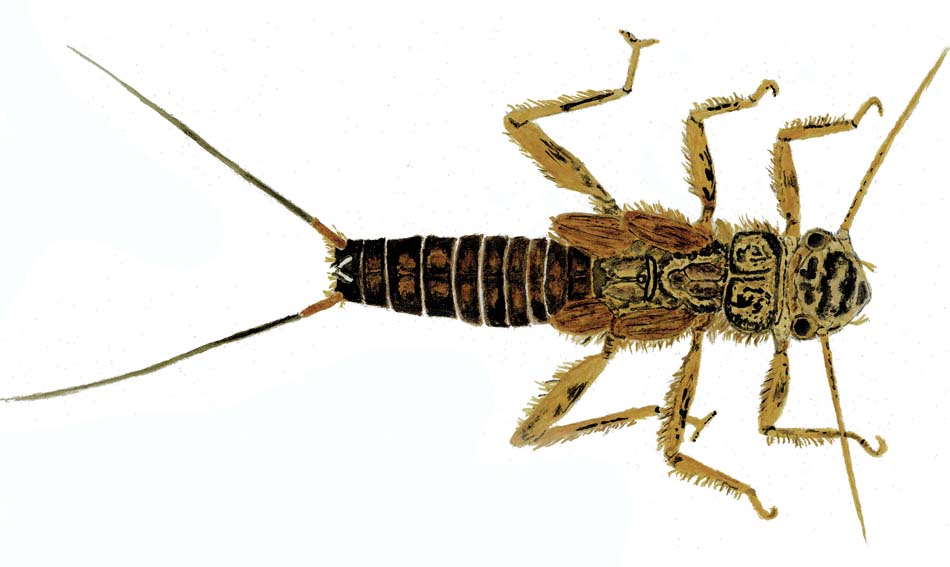
Montana Stonefly golden stone Nymph – Thom Glace
Those eight categories are:
- Mayflies
- Midges
- Caddis
- Stoneflies
- Terrestrials
- Scuds & SowbugS
- Annelids (Worms)
- Damselflies, Dragonflies and Water boatman —
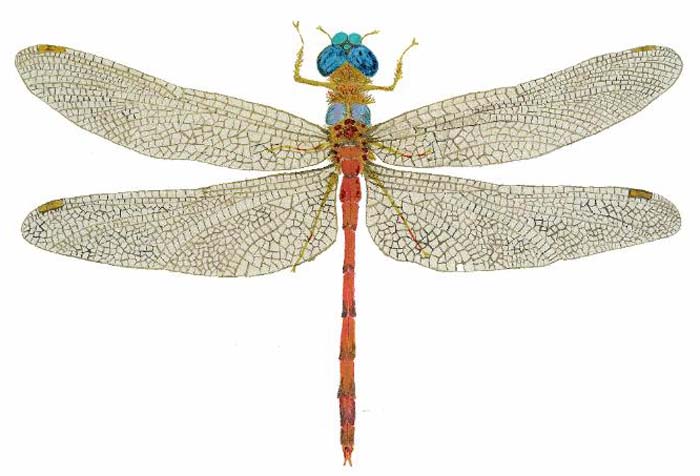
Bluefaced male Meadowhawk Dragonfly. Illustration by award-winning watercolorist Thom Glace.
Most insects that are important to us as anglers go through four distinct stages that we need to know. These are:
- Larva (nymph)
- Emerger
- Adult (dry),
- Spinner
Life in the fast lane of some insects can all take place in time by the saying, ‘Have a nice day.’ The adult and female can linger in trees before returning to the water as hovering winged insects waiting for their first and last dance together.
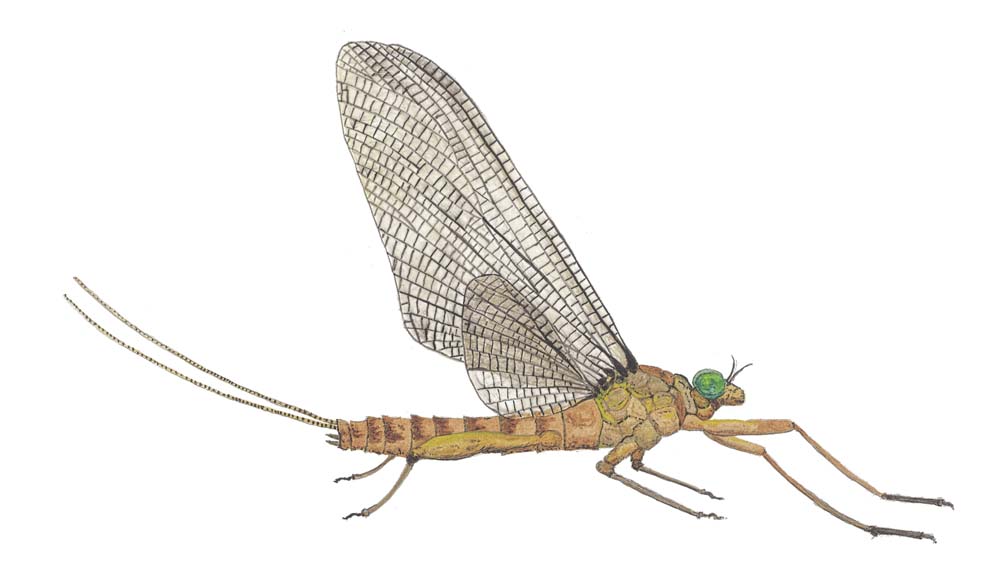
Male March Brown Dun Mayfly – Thom Glace
The male picks a partner, and she’s good with it, so they go for the gold immediately. Although the engagement was everything they thought it could be, the male dies immediately. It’s an unwitnessed death on the water except for Salmonids or birds who await a dining experience, or it may carry on until it becomes fertilizer.
The female drops the matured eggs while low to the water. Upon completing eliminating her eggs, she falters from spent energy, trying to fly up and away but bouncing off the water until the water creates enough surface tension through her wings. She dies of exhaustion or by having been eaten by a fish or a bird or continues on the way to oblivion.
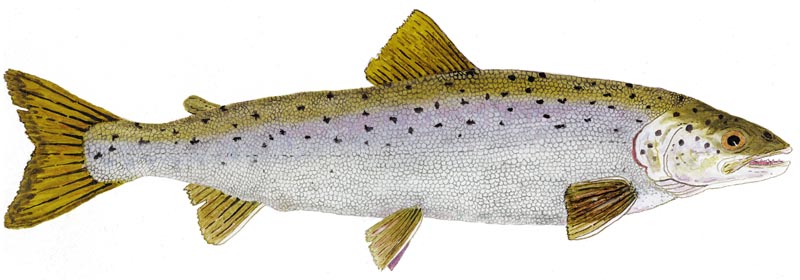
Atlantic salmon caught in Quebec – commissioned art by Thom Glace – avid angler, conservationist and world renown watercolorist/illustrator. Website . . .
Aquatic insects are a food source for trout and salmon at any stage of their life. These insects can be the most sustaining freshwater food for these fish for some time. Throughout their lives, these Salmonoids will respond to imitations (tied fly), which matches one of the life stages of bugs, especially when the trout are keying on a stage you are witnessing. If an emerging insect is present, you can be sure the fish is eating from the benthic to the surface.
NOTE: Learn more about entomology . . .


